Dacia Spring vs Skoda Enyaq – Which model is better for everyday use?
Both models have their strengths – but which one suits you more?
Compare performance, efficiency, price and space directly: Dacia Spring or Skoda Enyaq?
Here’s where it gets real: The technical differences in detail
Costs and Efficiency: Price and efficiency are often the first things buyers look at. Here it becomes clear which model has the long-term edge – whether at the pump, the plug, or in purchase price.
Dacia Spring has a clearly advantage in terms of price – it starts at 14500 £, while the Skoda Enyaq costs 38100 £. That’s a price difference of around 23572 £.
In terms of energy consumption, the advantage goes to the Dacia Spring: with 13.20 kWh per 100 km, it’s a bit more efficient than the Skoda Enyaq with 14.80 kWh. That’s a difference of about 1.60 kWh.
As for range, the Skoda Enyaq performs significantly better – achieving up to 587 km, about 359 km more than the Dacia Spring.
Engine and Performance: Power, torque and acceleration are the classic benchmarks for car enthusiasts – and here, some clear differences start to show.
When it comes to engine power, the Skoda Enyaq has a clearly edge – offering 340 HP compared to 65 HP. That’s roughly 275 HP more horsepower.
In acceleration from 0 to 100 km/h, the Skoda Enyaq is significantly quicker – completing the sprint in 5.40 s, while the Dacia Spring takes 13.70 s. That’s about 8.30 s faster.
In terms of top speed, the Skoda Enyaq performs evident better – reaching 180 km/h, while the Dacia Spring tops out at 125 km/h. The difference is around 55 km/h.
There’s also a difference in torque: the Skoda Enyaq pulls decisively stronger with 679 Nm compared to 125 Nm. That’s about 554 Nm difference.
Space and Everyday Use: Whether family car or daily driver – which one offers more room, flexibility and comfort?
Seats: Skoda Enyaq offers somewhat more seating capacity – 5 vs 4.
In curb weight, the Dacia Spring is convincingly lighter – 1013 kg compared to 2002 kg. The difference is around 989 kg.
In terms of boot space, the Skoda Enyaq offers significantly more room – 585 L compared to 308 L. That’s a difference of about 277 L.
In maximum load capacity, the Skoda Enyaq performs convincingly better – up to 1710 L, which is about 706 L more than the Dacia Spring.
When it comes to payload, Skoda Enyaq clearly takes the win – 509 kg compared to 302 kg. That’s a difference of about 207 kg.
All in all, the Skoda Enyaq shows itself to be wins the duel decisively and secures the title of DriveDuel Champion.
It impresses with the more balanced overall package and proves to be the more versatile companion for everyday use.
Skoda Enyaq Video
Dacia Spring
The Dacia Spring stands out as an affordable and environmentally friendly option in the electric vehicle market, combining practicality with a compact design ideal for urban settings. Its minimalist interior, while basic, provides all the essential features needed for a comfortable drive, reflecting its cost-effective approach. The vehicle's performance suits city driving, making it an appealing choice for those seeking an entry-level electric car.
details @ dacia-presse.de
@ dacia-presse.de
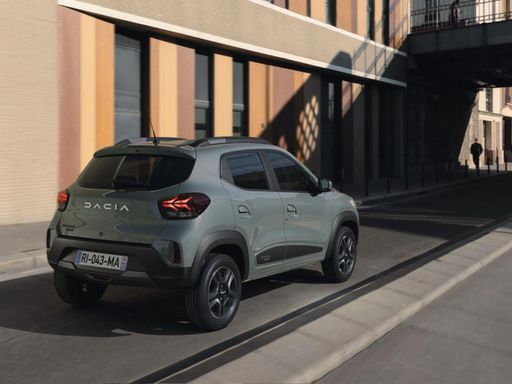 @ dacia-presse.de
@ dacia-presse.de
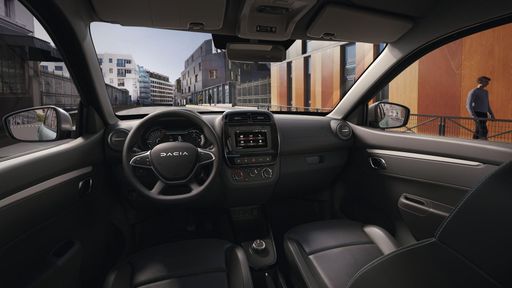 @ dacia-presse.de
@ dacia-presse.de
Skoda Enyaq
The Škoda Enyaq represents a bold step for the Czech manufacturer, embracing a stylish design and environmental consciousness with its electric powertrain. Inside, the cabin offers a blend of comfort and advanced technology, creating a modern driving experience. With its spacious interior and practical features, the Enyaq is perfect for families or anyone looking for a practical yet luxurious electric vehicle.
details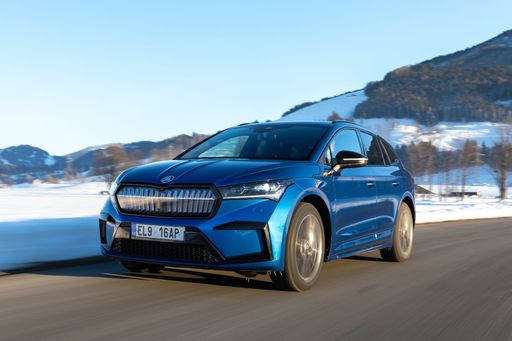 @ skoda-media.de
@ skoda-media.de
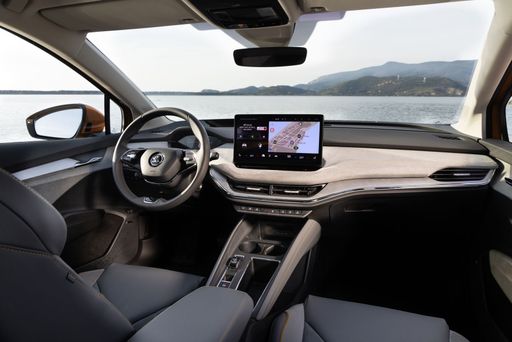 @ skoda-media.de
@ skoda-media.de
 @ skoda-media.de
@ skoda-media.de
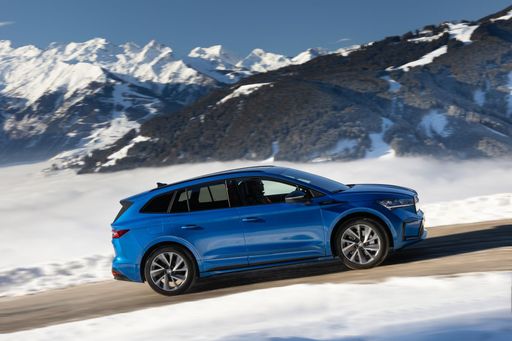 @ skoda-media.de
@ skoda-media.de
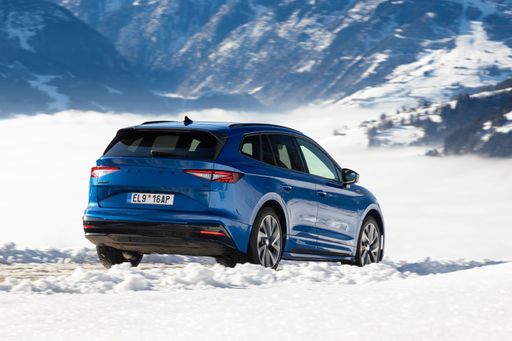 @ skoda-media.de
@ skoda-media.de

|

|
|
|
|
Costs and Consumption |
|
|---|---|
|
Price
14500 - 17100 £
|
Price
38100 - 52200 £
|
|
Consumption L/100km
-
|
Consumption L/100km
-
|
|
Consumption kWh/100km
13.2 - 14.1 kWh
|
Consumption kWh/100km
14.8 - 16.2 kWh
|
|
Electric Range
225 - 228 km
|
Electric Range
428 - 587 km
|
|
Battery Capacity
26.80 kWh
|
Battery Capacity
59 - 79 kWh
|
|
co2
0 g/km
|
co2
0 g/km
|
|
Fuel tank capacity
-
|
Fuel tank capacity
-
|
Dimensions and Body |
|
|---|---|
|
Body Type
SUV
|
Body Type
SUV
|
|
Seats
4
|
Seats
5
|
|
Doors
5
|
Doors
5
|
|
Curb weight
1013 - 1050 kg
|
Curb weight
2002 - 2293 kg
|
|
Trunk capacity
308 L
|
Trunk capacity
570 - 585 L
|
|
Length
3701 mm
|
Length
4658 - 4660 mm
|
|
Width
1583 mm
|
Width
1879 mm
|
|
Height
1519 mm
|
Height
1605 - 1625 mm
|
|
Max trunk capacity
1004 L
|
Max trunk capacity
1610 - 1710 L
|
|
Payload
265 - 302 kg
|
Payload
457 - 509 kg
|
Engine and Performance |
|
|---|---|
|
Engine Type
Electric
|
Engine Type
Electric
|
|
Transmission
Automatic
|
Transmission
Automatic
|
|
Transmission Detail
Reduction Gearbox
|
Transmission Detail
Reduction Gearbox
|
|
Drive Type
Front-Wheel Drive
|
Drive Type
Rear-Wheel Drive, All-Wheel Drive
|
|
Power HP
44 - 65 HP
|
Power HP
204 - 340 HP
|
|
Acceleration 0-100km/h
13.7 - 19.1 s
|
Acceleration 0-100km/h
5.4 - 8.1 s
|
|
Max Speed
125 km/h
|
Max Speed
160 - 180 km/h
|
|
Torque
113 - 125 Nm
|
Torque
310 - 679 Nm
|
|
Number of Cylinders
-
|
Number of Cylinders
-
|
|
Power kW
33 - 48 kW
|
Power kW
150 - 250 kW
|
|
Engine capacity
-
|
Engine capacity
-
|
General |
|
|---|---|
|
Model Year
2024
|
Model Year
2025
|
|
CO2 Efficiency Class
A
|
CO2 Efficiency Class
A
|
|
Brand
Dacia
|
Brand
Skoda
|
What drive types are available for the Dacia Spring?
The Dacia Spring is available as Front-Wheel Drive.
The prices and data displayed are estimates based on German list prices and may vary by country. This information is not legally binding.
